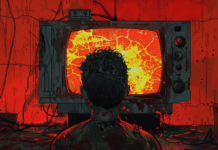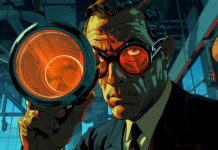Snapchat, the social media platform known for its unique and viral augmented reality (AR) trends, has launched a new promotional campaign that showcases the bizarre effects of its AR technology as a means to present people with a different perspective on the real world. With 72% of active Snapchat users already engaging with AR elements in the app every day, there is a clear interest in these types of activations that provide a new way of seeing the familiar.
AR is a key focus for Snap, and despite operating at a much smaller scale than Meta and Apple, which are also investing big in AR projects, Snap has continued to punch above its weight in this area by continually coming out with AR content that grabs attention and engages audiences. Meta is still struggling to maintain relevance with younger audiences, a key element that could derail its metaverse vision, while Apple has actually leaned on Snap to help showcase its advanced AR tools over time.
If nothing else, Snapchat has its finger on the pulse when it comes to AR trends, which is why virtually every AR trend—from anime filters to baby faces, from crying faces to vomiting rainbows—all of these have originated from Snapchat, and that’s remained consistent over time, even with newer platforms like TikTok entering the same realm.
Snap is very in-tune with its user base, which is also why its Snapchat+ subscription offering is already doing better than Twitter Blue, even with the addition of tweet editing verification ticks (Snapchat+ has over 1.5 million paying subscribers, versus an estimated 325k for Twitter Blue).
According to Matt McGowan, GM of Snap: “We truly believe AR is the future of computing, and the numbers are compelling. On average, over 250 million Snapchatters engage with AR every day on the app, and Snapchatters play with AR Lenses 6 billion times per day—that’s pretty telling.”
Real-world applications for brand marketers are countless. McGowan adds, “I like to think if you can imagine it, you can likely achieve it with AR. We’ve seen auto companies set up AR showrooms so consumers could see the features of the car they were planning to buy via an AR immersive experience; take a look at the Jeep Code campaign. We’re also seeing huge uptake when it comes to brands/retailers of all sizes utilizing AR for “try-on,” including accessories, shoes, makeup, and clothing. AR allows the consumer to go from “that looks good” to “that looks good on me!””
Snapchat’s new campaign aims to strengthen its business with an augmented reality focus, an element it’s been steadily enhancing. Some say this immersive content can help the platform stay connected with young audiences and expand beyond traditional social media ads.
In recent years, Snap has focused increasingly on its AR efforts. But the real question the company faces now is whether adding AR elements to its platform will help it continue growing in the face of competition and uncertainty. It is perhaps necessary for Snap to pivot to AR, much like Facebook and Instagram parent Meta eventually needed to diversify its slowing social media business. Plus, there have been challenges both for the company and across the industry.
However, experts believe that there are growing use cases for AR to engage people, which could form a path back to growth for Snap. Some marketers have been testing AR as an easy way to experiment with the metaverse, which can attract younger audiences. They also point out that Snap’s ability to quickly roll out and update these types of features makes the app more appealing over others.
In conclusion, Snapchat’s new campaign and continued focus on AR technology sets them apart. SnapChat’s new AR campaign may seem weird, but it’s a clever way to grab attention and attract new users. The company has a proven track record of staying ahead of the curve with AR trends, and its in-tune understanding of its user base is what sets it apart from the competition. With real-world applications for brand marketers and creators alike, AR is the key to Snapchat’s future success. So, don’t be surprised if you find yourself seeing the world through Snapchat’s eyes in the near future.











